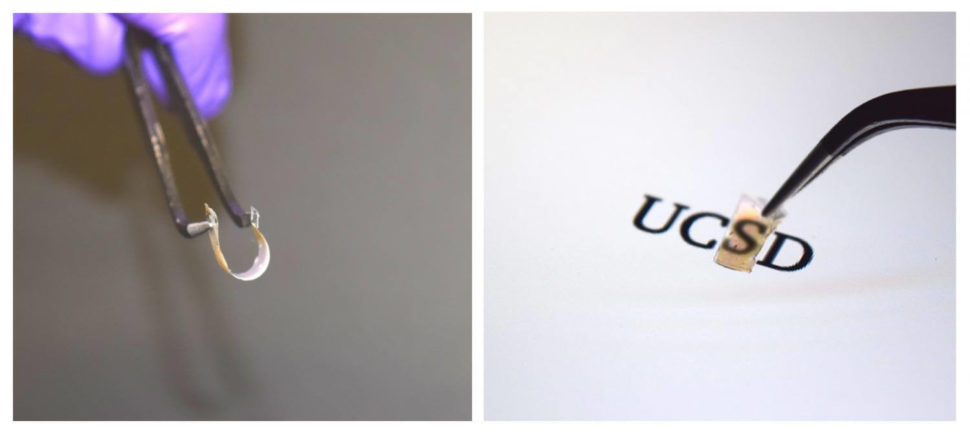Engineers at the University of California San Diego have created a thin, flexible material which absorbs light perfectly from any angle. This new broadband absorber can also be customized to absorb light selectively according to specific wavelengths.
Making materials that absorb light is a major step in the design of stealth technology, light detectors, and energy harvesting. There are many materials that absorb light perfectly, but their main drawback is that they are too bulky and inflexible, which leads to cracking and delaminating of the material when bent or heated.
#UCSanDiego #engineers developed a new, flexible #lightabsorbant material.Click To TweetNanomaterials and metamaterials, which can absorb light at certain wavelengths already exist but don’t apply to all wavelengths. They are mainly used in military applications, for example, camouflage.
Near-Perfect Light Absorber
A team of engineers led by Zhaowei Liu and Donald Sirbuly at the UC San Diego Jacobs School of Engineering synthesized a special, new light-absorbant material. The near-perfect broadband absorber can absorb 87% of near-infrared light at 1,200 to 2,200 nanometers, with 98% absorption at 1,550 nanometers wavelength. They published their study in the journal Proceedings of the National Academy of Sciences.
To create a complex structured heterogeneous environment with specific wave properties, engineers used a class of particles known as THMMPs (transferable hyperbolic metamaterial particles).
To have THNMPs display their properties (omnidirectional selective and broadband absorption), engineers aligned hyperbolic nanotube arrays vertically, alternating layers of zinc oxide and aluminum-doped zinc oxide. This structure is a modified photonic crystal: photons entering it are not recognized nor retained within the structure. Then, the array was shifted to the polydimethylsiloxane, a flexible, 60 microns thick transparent polymer, and the silicon substrate was removed by ion etching.
The light absorption range of the resulting array, from 1200 to 2200 nanometers or the lowest absorption rate observed, is in the range of 87%. The highest rate, 98.1%, was observed in the center of the specified wavelength range.
Light Absorption Applies to Stealth, Energy Technologies
“This material offers broadband,” professor Liu said, “yet selective absorption that could be tuned to distinct parts of the electromagnetic spectrum.”
Scientists suggest that the technology is universal and can be applied to other nanoparticles, which will expand the range of their applications.
This new light absorption material can be used in the military industry for possible stealth applications including both vehicles and uniform camouflage.
Another potential application for this light absorption material is in energy harvesting, in particular thermophotovoltaic conversion which requires maximum absorption of light, from all angles and all wavelengths.



















Comments (0)
Most Recent